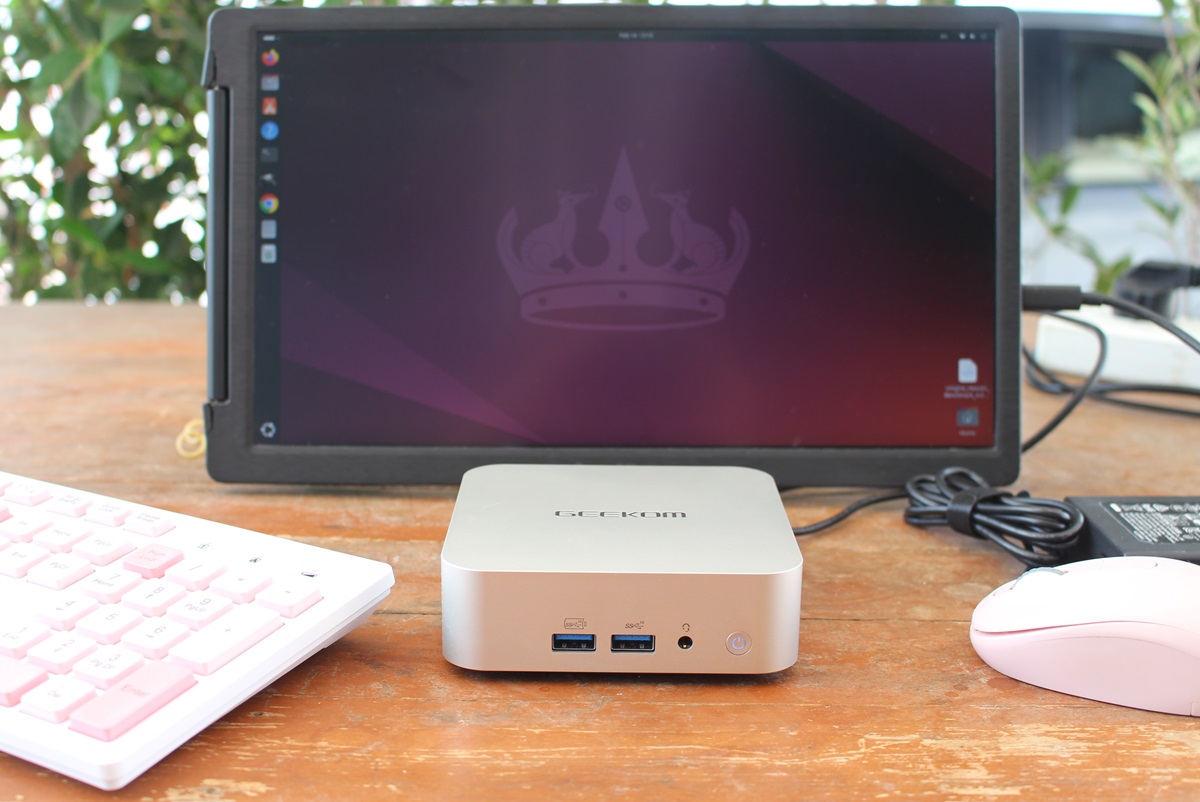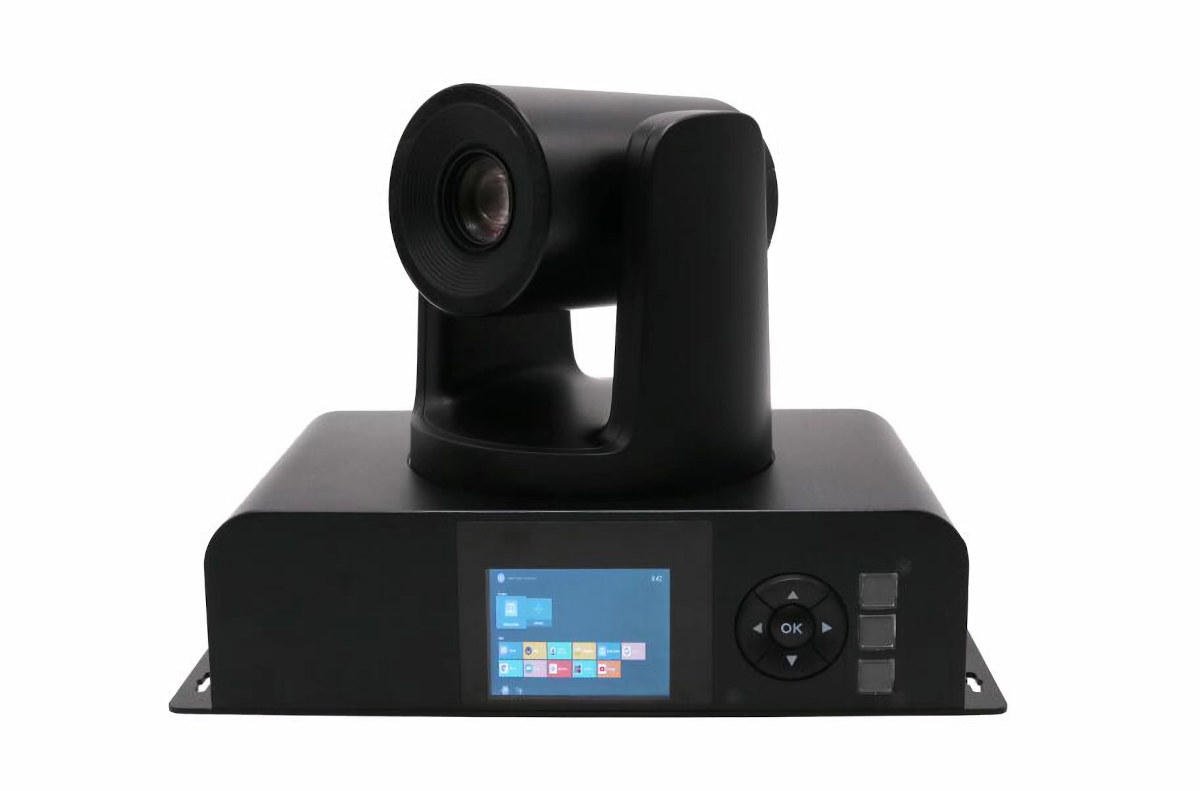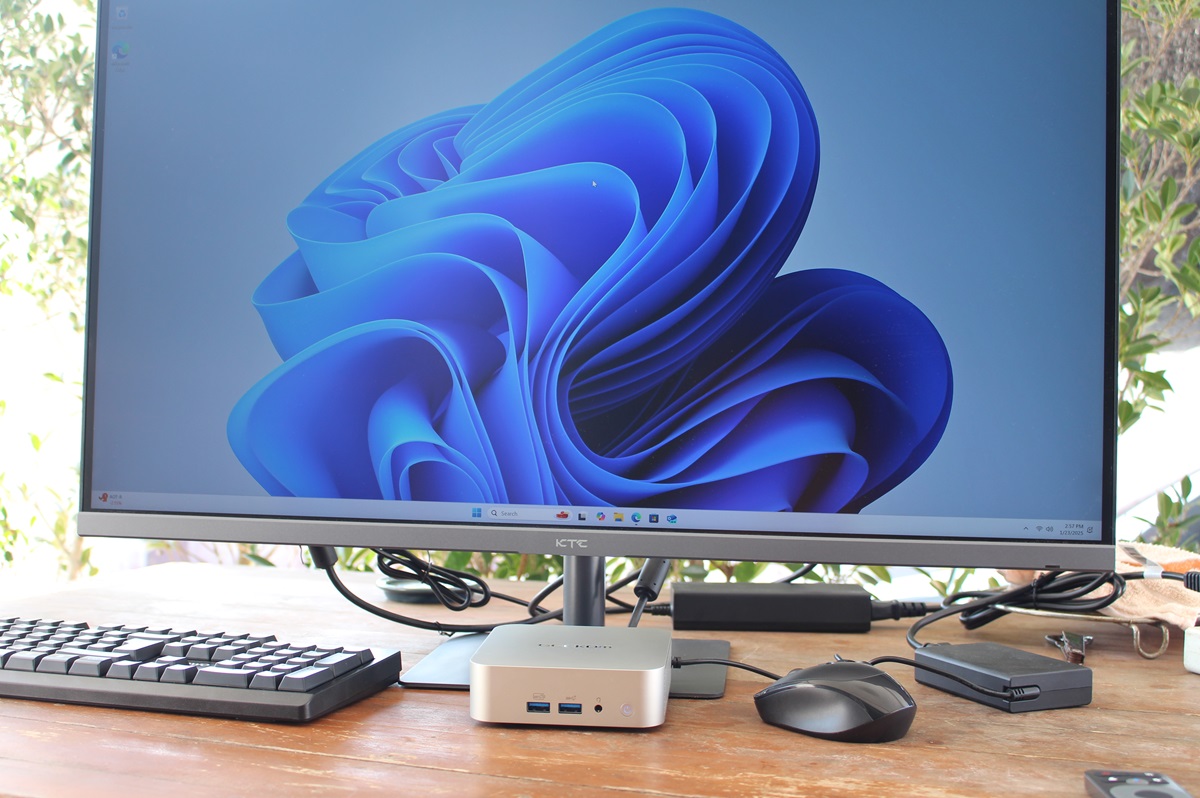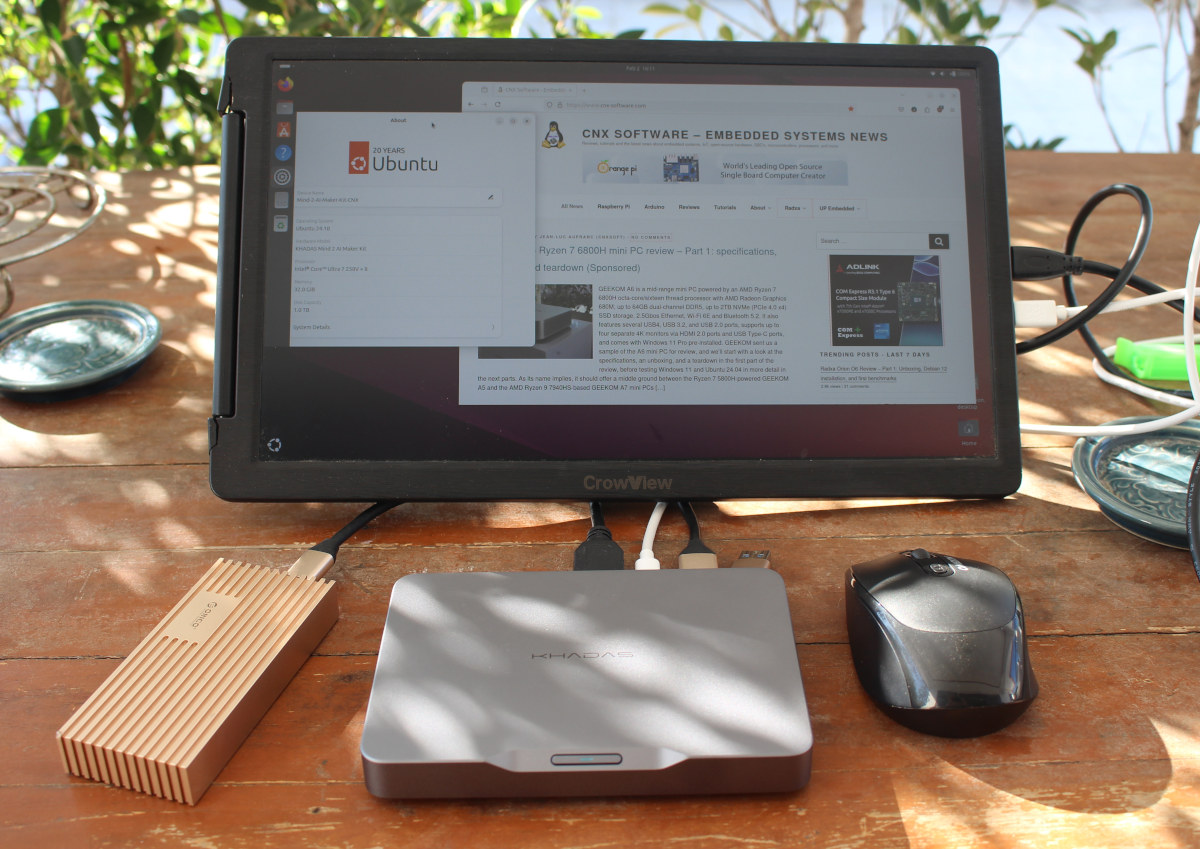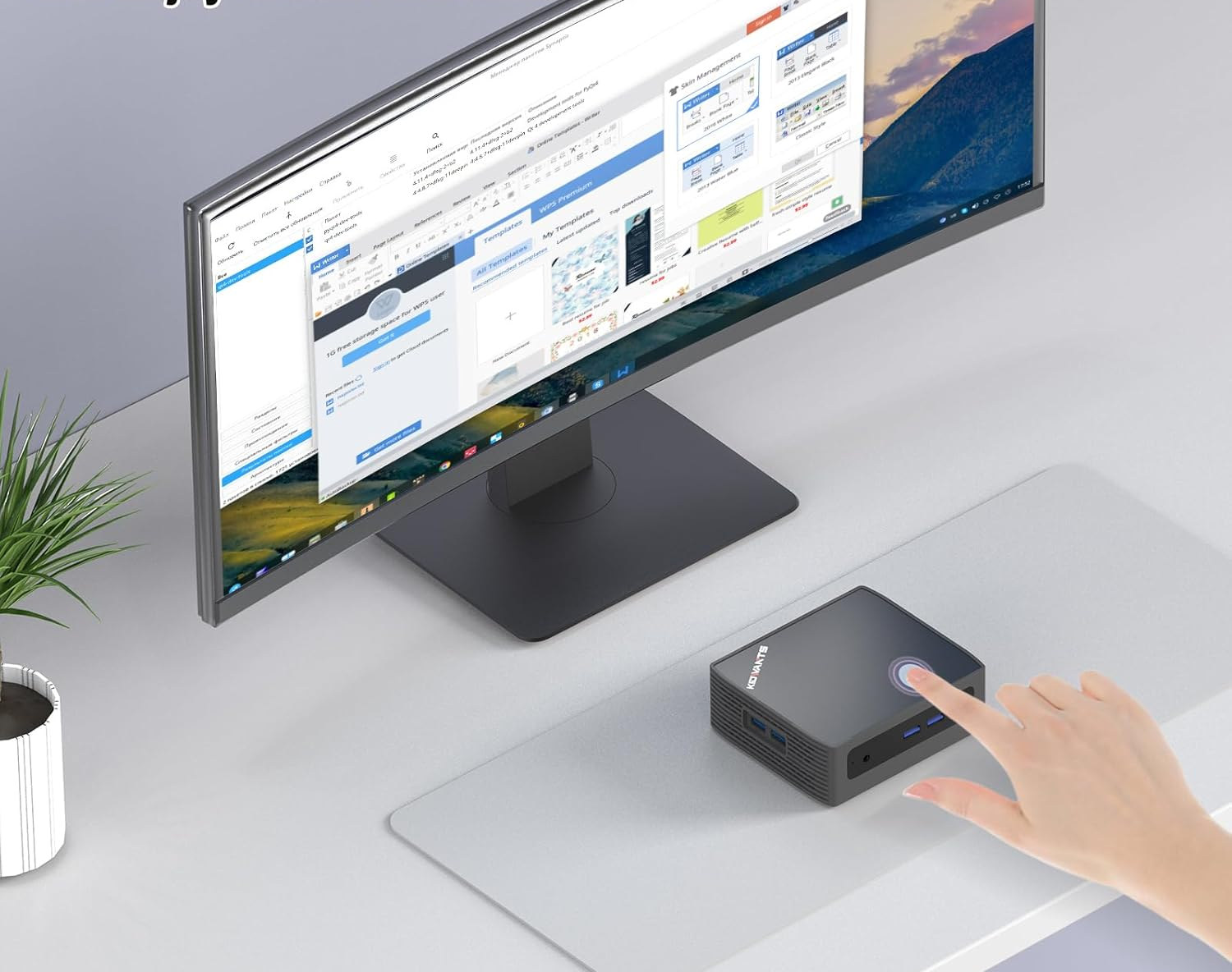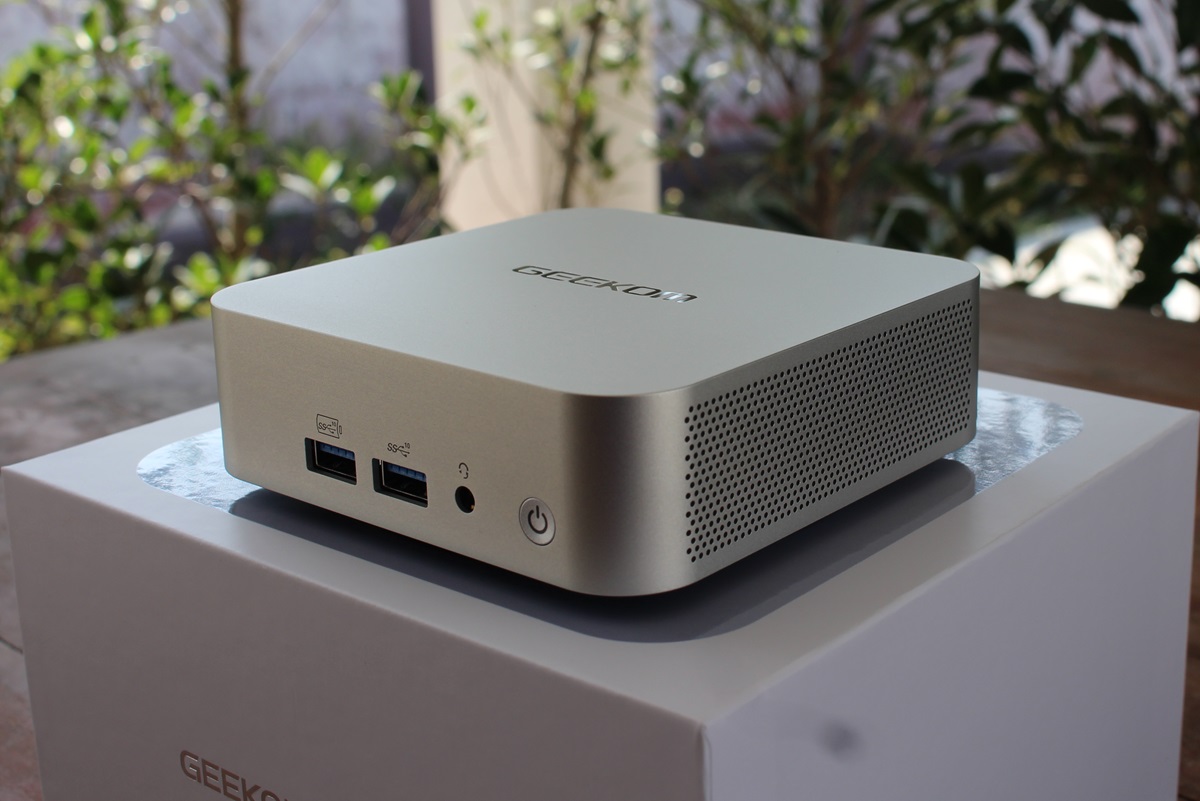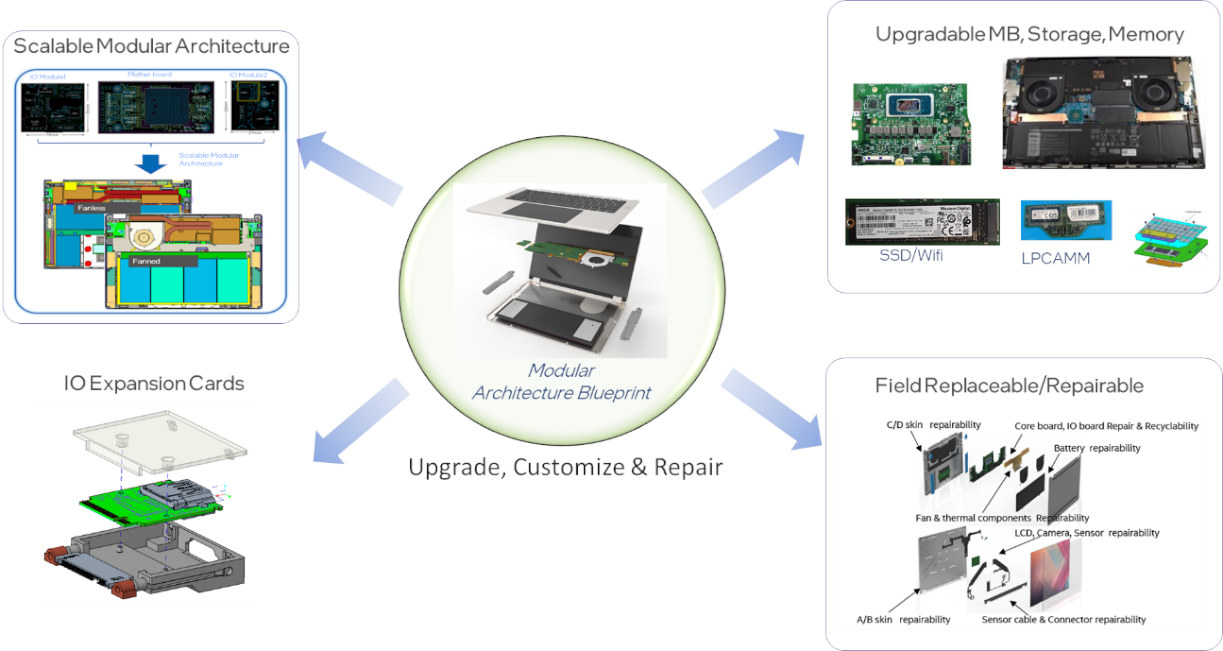We’ve already checked out the hardware of the GEEKOM A6 mini PC with an unboxing and teardown in the first part of the review, and thoroughly tested the AMD Ryzen 7 6800H mini PC in Windows 11 Pro in the second part, so it’s now time to report our experience with Ubuntu 24.04 Linux on the mid-range mini PC. We’ve gone through features testing, system benchmarks, storage (SSD and USB) performance tests, 2.5GbE and WiFi 6 network evaluation, 4K and 8K YouTube video playback, a stress test to check out the cooling ability of the mini PC, and finally fan noise and power consumption measurements. Ubuntu 24.04 installation and system information Since we wanted to install Ubuntu 24.04.1 LTS alongside Windows 11 Pro, we resized the partition by roughly half. But since the C: drive was “BitLocker Encrypted”, we knew Ubuntu installation wouldn’t be successful that way, so we went to […]
CWWK X86-P6 Pocket NAS / PC features Intel N150 or Core 3 N355 CPU, four NVMe SSD sockets, dual 2.5GbE, dual HDMI 2.0
CWWK X86-P6 is a pocket-sized mini PC and NAS powered by either an Intel Processor N150 or Core 3 N355 Twin Lake processor, and equipped with four M.2 Key-M sockets slot for NVMe SSDs or AI accelerators. The Twin Lake mini PC supports up to 48GB DDR5 memory, features two 2.5GbE ports, two HDMI 2.0 video output, and two USB 3.0 ports, and can take Intel AX211 or BE200 WiFi 6/7 wireless modules. CWWK X86-P6 specifications: Twin Lake SoC (one or the other) Intel Processor N150 quad-core processor @ up to 3.6 GHz (Turbo) with 6MB cache, 24EU Intel UHD graphics @ 1.0 GHz; TDP: 6W Intel Core 3 N355 octa-core processor @ up to 3.9 GHz (Turbo) with 6MB cache, 32EU Intel UHD graphics @ 1.35 GHz; TDP: 15W System Memory – Up to 48GB DDR5 4800 MHz via SO-DIMM socket Storage – 4x M.2 M-key 2280 (PCIe 3.0 […]
Mekotronics R58-PTZ video surveillance/live streaming embedded computer features a PTZ camera, two HDMI input ports
I swear it’s not an AI-generated picture of a device, but the Mekotronics R58-PTZ is real and just another unusual Rockchip RK3588 hardware platform from the company that’s an embedded computer with a 3-inch display on the front panel and a PTZ (Pan-Tilt-Zoom) camera placed on top. Mekotronics describes it as a live-streaming box designed for video surveillance, so I assume its main use case is to leverage to built-in 6 TOPS NPU for live streaming with some real-time effect and/or surveillance applications detecting persons, masks, etc… especially it also offers two HDMI inputs for extra cameras. Mekotronics R58-PTZ specifications: SoC – Rockchip RK3588 octa-core processor with CPU – 4x CortexA76 cores @ up to 2.4 GHz, 4x CortexA55 core @ 1.8 GHz GPU – Arm Mali-G610 MP4 GPU with support for OpenGL ES 1.1/2.0/3.2, OpenCL 2.2, Vulkan 1.2 Video decoder – 8Kp60 H.265, VP9, AVS2, 8Kp30 H.264 AVC/MVC, 4Kp60 […]
GEEKOM A6 Review – Part 2: A sub-$500 mid-range AMD Ryzen 7 6800H mini PC tested with Windows 11 Pro (Sponsored)
In the first part of the review, we’ve already checked out the specs, gone through an unboxing and a teardown of the GEEKOM A6 mini PC powered by an AMD Ryzen 7 6800H CPU with up to 32GB DDR5 and a 1TB SSD, before quickly booting the preinstalled Windows 11 Pro. We’ve now had time to test the GEEKOM A6 in detail, so we’ll report our experience with the Ryzen 7 6800H mini PC with Windows 11 Pro. We’ve tested the features, ran benchmarks, evaluated storage and networking performance, stress-tested the device to see how it performs under load, and measured fan noise and power consumption. We’ll also compare it to the previous GEEKOM A5 and A7 mini PCs. [Update: The sponsored tag was added temporarily, as GEEKOM paid for the review to be pinned at the top of the website for one week] Software Overview and Feature Testing Going […]
Khadas Mind 2 AI Maker Kit Review – Part 3: Ubuntu 24.10 and the importance of power limits
I’ve already reviewed the Khadas Mind 2 AI Maker Kit with Windows 11 Home, and today, I’ll report my experience with Linux on the Intel Core Ultra 7 258V mini PC using Ubuntu 24.10 operating system. I would usually review systems with Ubuntu 24.04 LTS OS, but considering the Intel Core Ultra 7 258V SoC is so new, I installed Ubuntu 24.10 when I tested whether disabling VT-d (IOMMU) would improve Intel Arc GPU performance (it does to some extent), and it turns out it was a good decision because Ubuntu 24.04 requires lots of fixes and workarounds to work the Khadas Mind 2 AI Maker Kit, at least until Ubuntu 24.04.2 is released later this month with a more recent kernel. Khadas Mind 2 AI Maker Kit – Ubuntu 24.10 system information My Ubuntu 24.10 installed has both Linux 6.11 (default) and Linux 6.13 kernels, but I did most […]
Kidwants KN1 is a $104 mini PC with a large touchpad on its top cover
Most mini PCs have pretty much the same features these days, but the Kidwants KN1 mini PC has a rather unique feature since it integrates a touchpad in its top cover allowing the user to interact without a mouse. The specifications are low-end with an Intel Celeron N4000 dual-core Gemini Lake processor first introduced in 2017, 8GB LPDDR4 RAM, and 128GB eMMC flash. The mini PC also offers two 4K-capable HDMI video outputs, Ethernet and WiFi 5 connectivity, five USB ports, and an audio jack. Kidwants KN1 specifications: SoC – Intel Celeron N4000 dual-core Gemini Lake processor @ 1.10 GHz / 2.6 GHz (Turbo) with Intel UHD graphics; 6W TDP System Memory – 8GB LPDDR4 RAM Storage 128GB eMMC flash M.2 2280 SATA socket for up to 1TB SSD Video – 2x HDMI ports up to 4Kp60 Audio – 3.5mm audio jack Connectivity Gigabit Ethernet RJ45 port Dual-band Wi-Fi 5 […]
GEEKOM A6 Ryzen 7 6800H mini PC review – Part 1: specifications, unboxing, and teardown
GEEKOM A6 is a mid-range mini PC powered by an AMD Ryzen 7 6800H octa-core/sixteen thread processor with AMD Radeon Graphics 680M, up to 64GB dual-channel DDR5, up to 2TB NVMe (PCIe 4.0 x4) SSD storage, 2.5Gbos Ethernet, Wi-Fi 6E and Bluetooth 5.2. It also features several USB4, USB 3.2, and USB 2.0 ports, supports up to four separate 4K monitors via HDMI 2.0 ports and USB Type-C ports, and comes with Windows 11 Pro pre-installed. GEEKOM sent us a sample of the A6 mini PC for review, and we’ll start with a look at the specifications, an unboxing, and a teardown in the first part of the review, before testing Windows 11 and Ubuntu 24.04 in more detail in the next parts. As its name implies, it should offer a middle ground between the Ryzen 7 5800H-powered GEEKOM A5 and the AMD Ryzen 9 7940HS-based GEEKOM A7 mini PCs […]
Intel floats Modular PC design proposal for repairable laptops and mini PCs
Intel has published an article proposing a modular PC design that would improve the repairability/right-to-repair of laptops and mini PCs and reduce e-waste through the replacement of motherboard, display, and M.2 or FPC add-on modules for the user-facing ports. Making repairable, modular electronic devices is not a new idea, and the Framework laptops are probably the best-known option now, but they do come at a premium. But most projects are limited success, for instance, Project Ara modular smartphone from Google eventually died off. We’ve also covered modular or open-source hardware solutions from smaller companies over the years such as Firefly Station P3D modular Arm mini PC with swappable cards, or Olimex Teres-I DIY and open-source hardware laptop. It’s good news that a large company like Intel is taking the repairable, modular PC topic seriously, but as we’ll see below it’s currently a high-level proposal with few technical details. Most laptops […]


